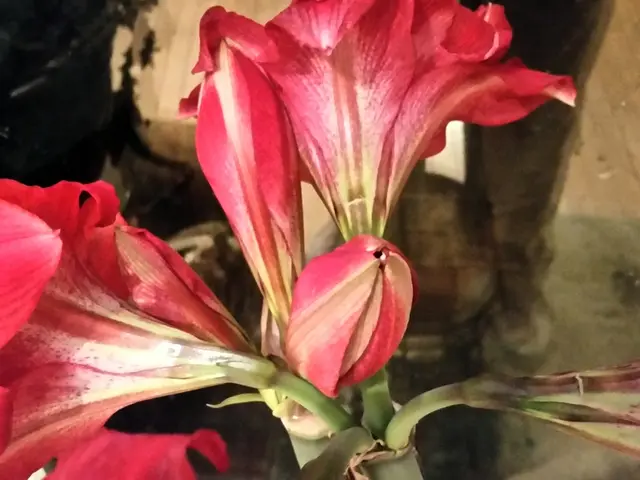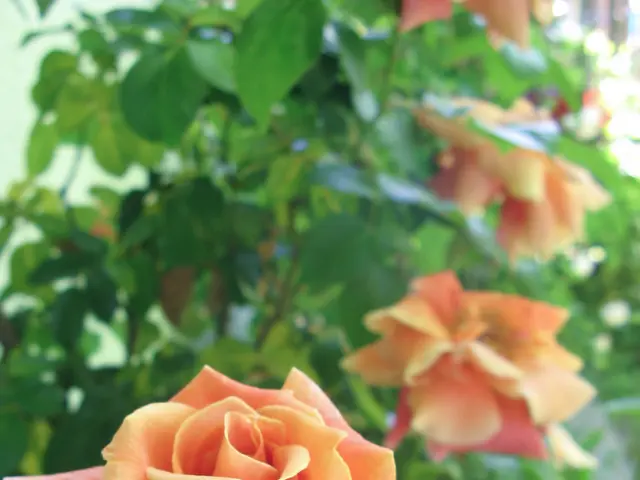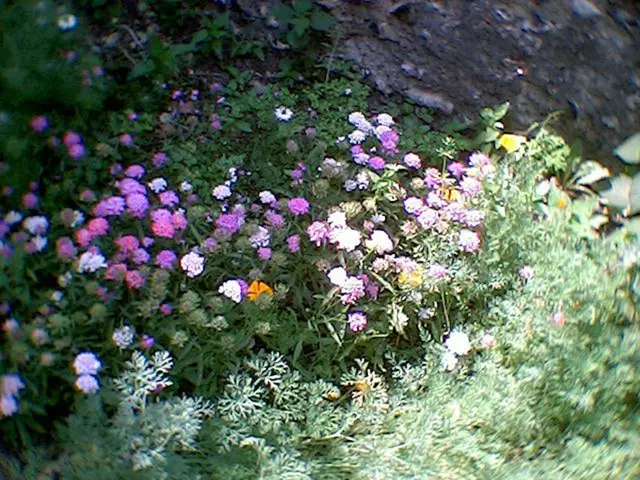Methods to Secure Peonies and Prevent the Blooms from Drooping:
Revised Article:
Peonies, blooming with their lavish, multi-layered petals, are a stunning sight during springtime. But their sumptuous blooms can be a curse, often causing the blooms to droop to the ground or even snap off. That's where staking comes into play - a simple yet essential step that ensures those delightful flowers will rise tall and beautiful for your garden or bouquets to treasure. Here's the lowdown on when and how to stake your peonies to keep their flowers proud and display-worthy.
C.L. Fornari, a seasoned author, radio host, and garden consultant, shares her wisdom on these delightful blooms.
Which Peonies Need Staking?
Traditional garden peonies and their hybrids are the ones that'll benefit from a good stake. However, tree peonies and Itoh peonies are usually sturdy enough to stand on their own, making staking unnecessary.
When to Stake Your Peonies
Proper timing is crucial when it comes to staking. It's best to stake them before they're in full growth to avoid any disturbance to the roots or breakage of the branches. If you're getting a new peony, have your staking strategy ready before you plant it, so it's all set and ready when the time comes. If you've already planted your peony, add staking carefully after the plant has gone dormant in winter or early spring. If the peony's stems are over five inches tall, go for a gentler wrapping method using netting or twine over grow-through metal grids.
Staking Methods
Plenty of options for staking your peonies, depending on your preference and budget. Whether you go for DIY solutions or purchased accessories, here are some methods you can choose from:
1. Cages and Rings
For those standalone peonies, specialized peony cages are the way to go. These metal hoops with a grid on top support the growing stems and blooms. They're a solid investment if you've only got a few peonies to worry about. Just remember to install them early in the season to avoid any damage to the stems.
Cheaper alternatives include standard tomato cages, although they likely won't be as sturdy as peony cages. Rings, which are half circles without the grid on top, are more forgiving to install after growth has begun, but they might not be as secure as cages. To be safe, aim for rings that are at least 24 inches tall.
2. Corralling
This is the most budget-friendly option, as it uses items you probably already have on hand. You create a round cage with wood or metal stakes, and then you wrap twine around each stake, creating an upper and lower loop, keeping tension high to secure the branches.
If you have a young peony, you can even use fallen branches as the stakes. Sturdy, thick wood or metal stakes will give mature peonies the support they need. For a creative yet low-cost, nearly invisible method, try C.L. Fornari's recommendation: install a single stake that's about 2 to 3 inches taller than the peony. Attach garden twine to the stake, then without cutting the twine, catch individual stems with the twine and return to the stake, forming a radial pattern reminiscent of an umbrella spine. The peony will hide the structure once it blooms.
3. Wrapping
Ideal for long rows of peonies, this method consists of lining up metal or wood stakes along the outer rows and attaching mesh netting with 5-inch openings atop the peonies 18 to 20 inches from the ground. The netting needs to be very taut. A similar method is to use green metal stakes available at most garden centers with green twine. Wrap the twine tightly around the stake, forming a supportive structure.
- Gardeners often struggle with peonies' lavish blooms drooping or snapping off, but staking can help ensure these flowers rise tall and beautiful.
- Traditional garden peonies and their hybrids benefit from staking, while tree peonies and Itoh peonies typically don't require it.
- Proper timing is essential when staking peonies. It's recommended to do so before they're in full growth to avoid disturbing roots or breaking branches.
- C.L. Fornari, a garden consultant, suggests a gentler wrapping method using netting or twine over grow-through metal grids when stems are over five inches tall.
- Home & Garden and Bhg recommend installing specialized peony cages early in the season to avoid damaging stems.
- A budget-friendly option for staking peonies is a corralling method that uses wood or metal stakes and twine to create a radial pattern, which becomes nearly invisible once the peony blooms, providing a gorgeous addition to any gardening lifestyle.








